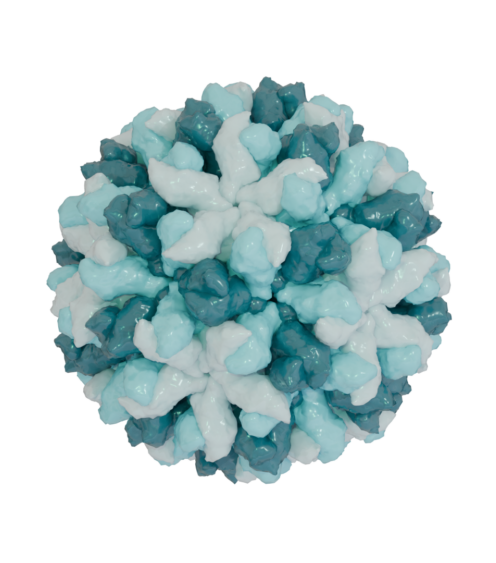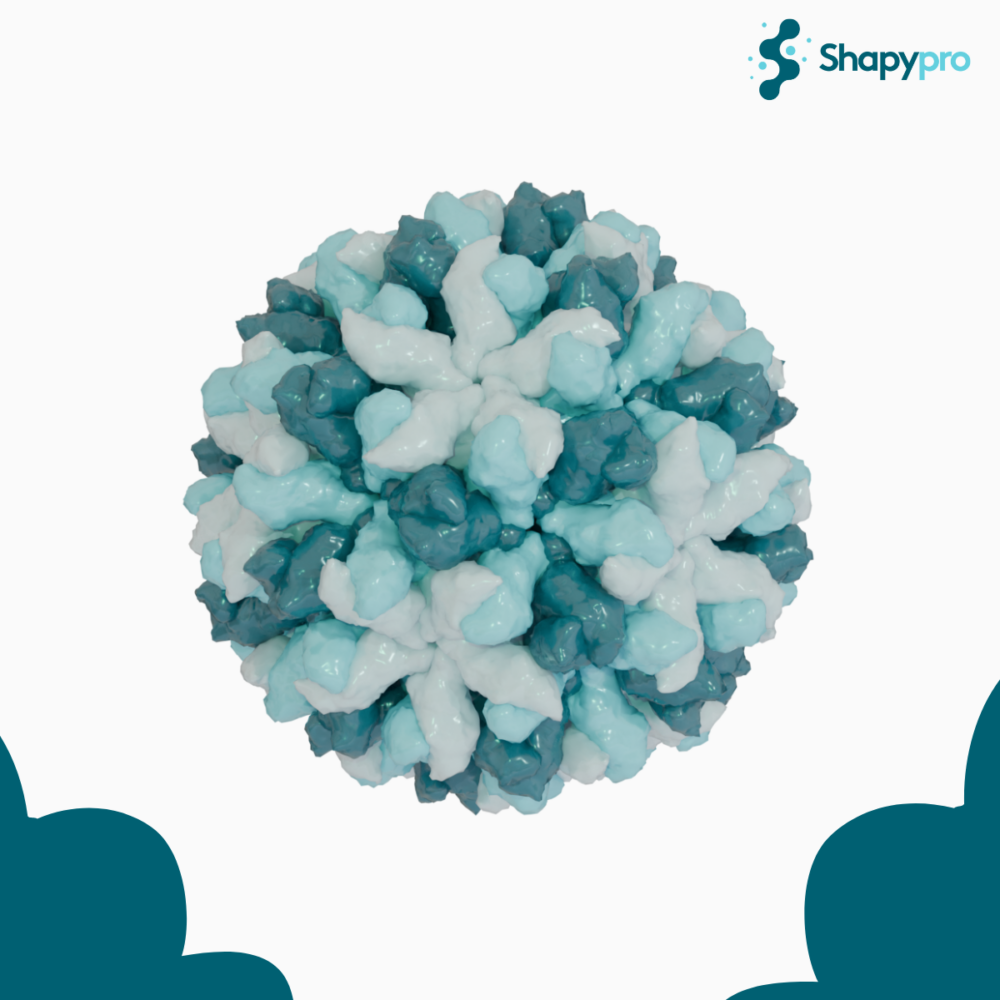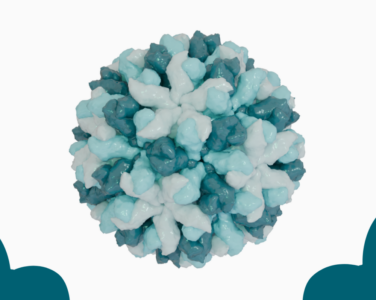The EN 17430 standard specifies the requirements and test methods for assessing the virucidal efficacy of hand disinfectants. A key aspect of this standard is the use of murine norovirus (MNV) as the test organism. This article explores in detail the use of murine norovirus in the tests of standard EN 17430, including its advantages and limitations, and discusses proposed alternatives currently under consideration.
Murine norovirus (MNV) is a non-enveloped virus belonging to the Caliciviridae family. It is structurally similar to human noroviruses, making it an ideal model for laboratory studies. MNV is particularly useful in disinfectant research due to its resistance to many virucidal agents, providing an adequate challenge for evaluating the efficacy of disinfectant products.
Role in EN 17430 Standard
The EN 17430 standard employs murine norovirus as a test organism to evaluate the virucidal efficacy of hand disinfectants. The testing process involves artificially contaminating the hands of volunteers with a virus suspension and subsequently applying the disinfectant. The efficacy of the product is measured by comparing the reduction in viral titers before and after treatment, relative to a reference solution of 70% ethanol.
Testing Procedure
The testing procedure in the EN 17430 standard is meticulous and aims to simulate real-world conditions of hand disinfectant use. Initially, volunteers’ hands are thoroughly washed with mild soap to remove any prior contaminants and dried completely. This ensures that any reduction in viral load is solely due to the efficacy of the disinfectant and not other factors. Once the hands are prepared, a suspension of murine norovirus is applied. This inoculation process involves placing a specific amount of the viral suspension on the volunteers’ hands and distributing it evenly to simulate realistic contamination conditions. The suspension is allowed to dry for a controlled period to ensure the virus adheres well to the skin surface.
The next step is the application of the hand disinfectant. The disinfectant is applied following a standard procedure described in the standard, including precise instructions on the amount of product, rubbing time, and application technique. This process is designed to replicate how disinfectants are used in everyday situations, ensuring that the results are representative of real use. To evaluate the disinfectant’s efficacy, virus samples are taken from the volunteers’ hands before and after the application of the disinfectant. The pre-treatment sampling provides a baseline of viral contamination levels, while the post-treatment sampling measures the residual virus amount. These samples are crucial for determining the reduction in viral titers. Finally, detailed data analysis is conducted to calculate the logarithmic reduction in viral titers. This calculation provides a clear quantitative measure of the disinfectant’s efficacy, comparing virus levels before and after treatment. The results must demonstrate a significant reduction in viral load for the disinfectant to be considered effective according to the standard.
Advantages of Using Murine Norovirus
 The use of murine norovirus (MNV) in the tests of the EN 17430 standard offers several significant advantages that enhance the reliability and relevance of the assessments for hand disinfectants.
The use of murine norovirus (MNV) in the tests of the EN 17430 standard offers several significant advantages that enhance the reliability and relevance of the assessments for hand disinfectants.
Murine norovirus is structurally similar to human noroviruses, which are a common cause of gastroenteritis and pose a significant public health challenge. This structural similarity means that MNV can serve as a reliable surrogate for human noroviruses in laboratory tests. Consequently, the results obtained from testing disinfectants against MNV are highly relevant and can be extrapolated to predict their efficacy against human noroviruses. This relevance is crucial because it ensures that the disinfectants tested and approved under the EN 17430 standard are effective against pathogens that are of significant clinical concern. By using MNV, researchers can study the virus’s behavior and the disinfectant’s effectiveness in a controlled environment, which closely mimics real-world conditions where human norovirus infections are prevalent.
One of the primary advantages of using murine norovirus is its safety profile in laboratory settings. Unlike human noroviruses, which can pose a risk to laboratory personnel due to their infectious nature, MNV does not infect humans. This characteristic makes MNV a safer option for use in disinfection tests, reducing the biohazard risks associated with handling live viruses. Laboratory technicians can work with MNV without the stringent biosafety measures required for human pathogens, facilitating smoother and more efficient research processes. This safety aspect is particularly important in ensuring that disinfection testing can be carried out without compromising the health and safety of laboratory staff, thereby encouraging more widespread and frequent testing.
Murine norovirus is known for its resistance to a wide range of virucidal agents. This resistance makes it an excellent challenge organism for evaluating the efficacy of hand disinfectants. Disinfectants that can effectively reduce MNV viral loads are likely to be highly effective against other resistant viruses as well. The use of such a robust test organism ensures that only the most potent disinfectants pass the EN 17430 standard, thereby raising the bar for product performance. This rigorous standard means that disinfectants which succeed in these tests are proven to have a high level of virucidal activity, providing strong protection against viral contamination. This resistance also drives innovation, encouraging manufacturers to develop more effective formulations that can meet these stringent criteria..
Limitations and Controversies
Despite its advantages, the exclusive use of murine norovirus as a test organism has generated debate. Exclusive use of murine norovirus could favor ethanol-based products, as these are particularly effective against non-enveloped viruses like MNV. This could create a competitive bias that excludes other types of disinfectants equally effective against enveloped viruses, such as quaternary ammonium compounds and bisguanides. The exclusivity of MNV as a test organism could lead to the elimination of potentially effective products from the market, distorting competition and limiting options available for consumers and healthcare professionals.
To address these concerns, it has been proposed to consider the inclusion of another non-pathogenic human virus. These virus, being non-pathogenic to humans, would provide a more balanced evaluation of disinfectants without the risks associated with human pathogens. This would allow for comparing the efficacy of disinfectants against a broader spectrum of viruses, avoiding the bias towards ethanol-based products and providing a more comprehensive picture of disinfectant efficacy. However, it is important to note that these are merely suggestions.
Additionally, there is a highlighted preference for in vitro methods, such as the use of synthetic skin, to improve the robustness and reproducibility of the results. Tests with human volunteers can present significant variability, affecting the consistency of the results. In vitro methods could provide a more standardized and reproducible alternative, eliminating the inherent variability of human trials and allowing a more controlled evaluation of disinfectant efficacy. This preference for in vitro methods reflects a move towards modernizing test methods, ensuring they are robust, reproducible, and applicable to a wide range of disinfectants. Again, it must be emphasized that these are proposed alternatives and are currently being considered for future implementation in the standard.
While recognizing the challenges posed by exclusive reliance on a single type of virus. According to the norm, for a product to claim virucidal activity, it must also pass standards such as EN 14476, which includes testing against other viruses like Poliovirus, Adenovirus, and Norovirus, among others. This comprehensive approach ensures a balanced and thorough evaluation of the virucidal efficacy of hand disinfectants.
In conclusion, the use of murine norovirus in the EN 17430 standard provides a relevant and rigorous method for evaluating hand disinfectants. Nevertheless, the potential bias towards ethanol-based products and the variability in human testing highlight the need for considering alternative methods. The inclusion of other viruses like BVDV and the use of synthetic skin are promising suggestions that could enhance the robustness and comprehensiveness of the standard. However, these alternatives are still under consideration and have not yet been implemented. The ongoing discussions and evaluations reflect the commitment to ensuring that the EN 17430 standard remains a reliable and effective tool for assessing the virucidal efficacy of hand disinfectants.



From my point of view there is no need to show the activity against MNV, when you want to show an activity against enveloped viruses. In such cases the EN 14476 is enough. As phase 2 step 2 you have to pass the EN 1500 with E. coli.
Dear Dr. Jürgen Gebel,
Thank you very much for your point of view, your expert feedback is very important to us, thank you very much for sharing it.
Please, could you tell us if an hand disinfectant manufacturer wish to claim virucidal activity in their product, sould they test their product under EN 14476 requeriments or should to test also EN 17430?
Again thanks you very much for share with us your expertise.